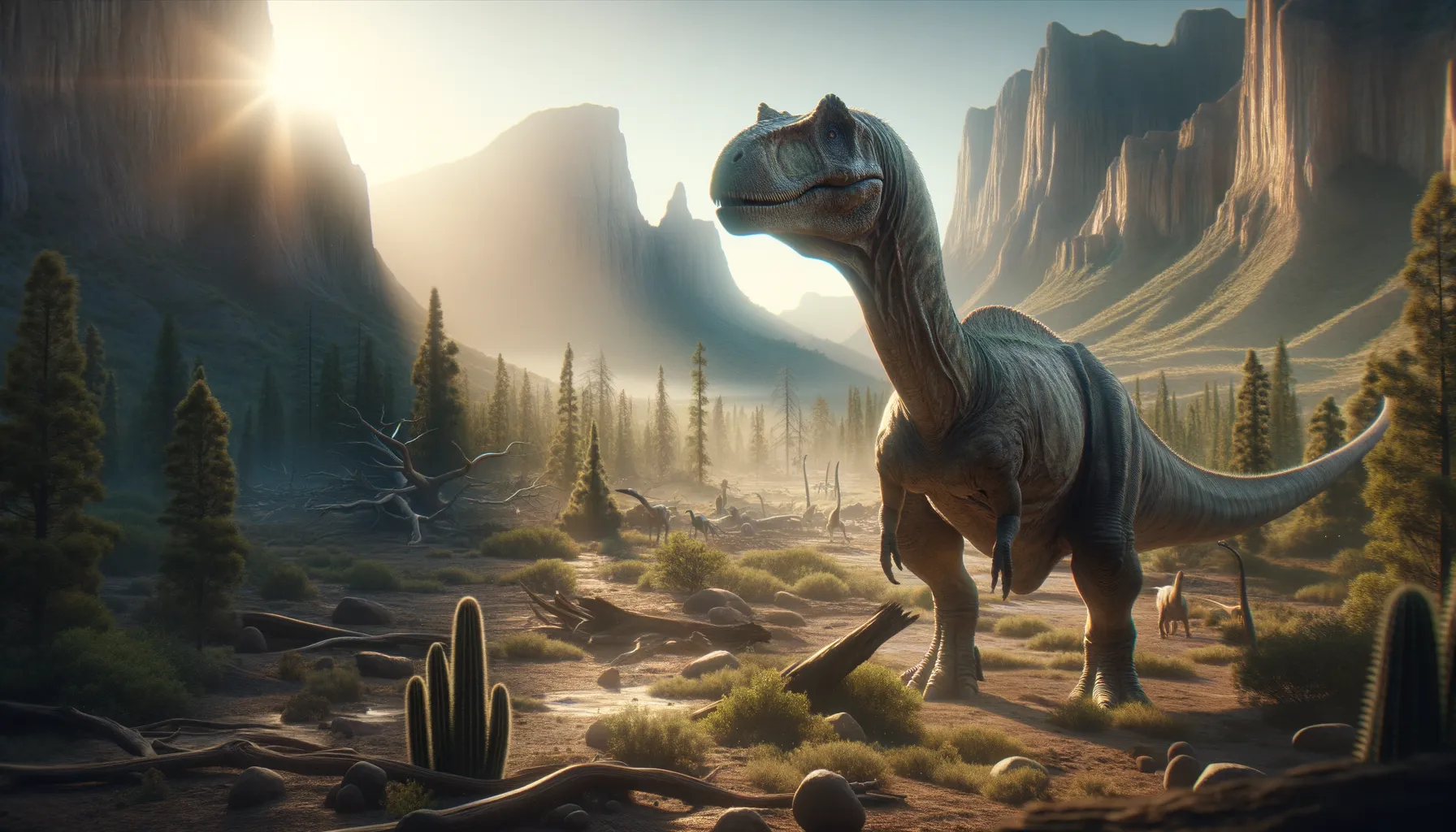
Sarahsaurus
A Jurassic survivor in a changing world.
Period
Jurassic
Length
Roughly 4 meters long.
Height
Approximately 1 meter tall at the hip.
Weight
Around 200 kilograms.
Sarahsaurus was a small to medium-sized dinosaur that lived during the Early Jurassic period. Exhibiting a blend of features seen in both early and more recent sauropodomorphs, it provides significant insights into the evolutionary transition of this group. Its fossils were first unearthed in what is now the southwestern United States, shedding light on the distribution of dinosaurs during this era.
Diet
Sarahsaurus was an herbivore that fed on a variety of plant materials. With strong jaws and teeth adapted for grinding, it could efficiently process the tough, fibrous vegetation available in its habitat.
Hunting
As a plant eater, Sarahsaurus didn’t hunt other creatures. Instead, it would forage for plant materials, likely moving around in search of favorable feeding grounds.
Environmental challenges
Living in a time of great change, Sarahsaurus faced fluctuating climates and shifting ecosystems. It had to adapt to varying food availability and climate conditions that could range from arid to more humid environments. Competition for resources with other herbivorous dinosaurs would have posed significant challenges, demanding resourceful dietary habits.
Speed
Moderate pace, not particularly fast.
Lifespan
Estimated around 20 to 30 years.
First discovery
Discovered in Arizona, USA, in 1997.
Fun Facts
- Sarahsaurus lived around 190 million years ago during the Early Jurassic period.
- It was named after Sarah Butler, a significant supporter of the research in the area where it was discovered.
- Sarahsaurus was a relatively small dinosaur, measuring about 4 meters long.
- Despite its size, Sarahsaurus had strong limbs, which suggests it might have been a powerful walker.
- It was a herbivore and likely fed on ferns and other vegetation flourishing in its time.
- Sarahsaurus fossils were first discovered in what is now the southwestern United States.
- The discovery of Sarahsaurus has provided valuable insights into the early evolution of sauropodomorph dinosaurs.
Growth and Development
Sarahsaurus developed relatively quickly, reaching adulthood within a few years. It underwent rapid growth spurts, a common strategy among dinosaurs to evade predators by growing larger quickly. Fossil evidence suggests a flexible growth rate, possibly influenced by environmental factors such as food availability.
Habitat
Sarahsaurus inhabited diverse environments, ranging from woodlands to open plains. Its habitat likely included a variety of plant life, providing ample food sources. The presence of rivers and lakes within these regions could have further supported its lifestyle by providing water and lush vegetation.
Interaction with other species
Sarahsaurus interacted with a host of different species, including both predators and other herbivores. Its interactions with predators would involve evasion tactics, while it competed with other herbivores for plant resources. Fossil finds suggest it shared its habitat with early theropods and other sauropodomorphs.
Natural lifespan
Naturally, Sarahsaurus could live up to 30 years.
Reproduction
Like many dinosaurs, Sarahsaurus laid eggs to reproduce. Nesting behaviors may have involved selecting secluded or protected areas to increase offspring survival chances. Parental care might have been limited, as suggested by fossil evidence of nest structures.
Social behaviour
Sarahsaurus might have shown some form of social behavior, potentially moving in small groups for foraging efficiency. Group movement could have provided added protection against predators, ensuring higher survival rates. However, specific social structures remain largely speculative.
Fossil locations
Fossils of Sarahsaurus have primarily been found in the southwestern United States, with key finds in Arizona. These discoveries have contributed significantly to understanding the distribution and evolution of early sauropodomorphs in North America. The well-preserved specimens have allowed for detailed studies of its anatomy and behavior.
